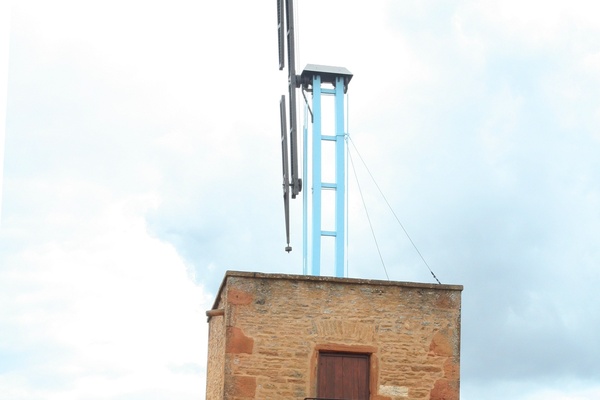The Chappe Telegraph, also known as the semaphore telegraph, was a visual signaling system developed in the late 18th century. It played a crucial role in the history of communication, revolutionizing long-distance information transmission. The Chappe Telegraph was a network of towers equipped with large mechanical arms that could be manipulated to convey messages.
Table of Contents
Definition of the Chappe Telegraph
The Chappe Telegraph was invented by Claude Chappe, a French engineer, in the late 1790s. It consisted of a series of towers, positioned within line of sight of each other, with each tower having a movable mechanical apparatus on top. These apparatuses, called arms or indicators, could be arranged into different configurations to represent letters, numbers, and other symbols. The operator at each tower would adjust the arms according to a pre-established code, allowing messages to be transmitted across long distances.
Importance of the Chappe Telegraph in Communication History
The Chappe Telegraph brought about a revolution in long-distance communication. Before its invention, communication over vast distances was limited to methods such as messengers on horseback or carrier pigeons. These methods were slow, unreliable, and often subject to errors. The Chappe Telegraph, on the other hand, provided a fast and efficient means of transmitting information, allowing messages to travel reliably across hundreds of kilometers in a matter of minutes.
The development of the Chappe Telegraph marked a significant advancement in the history of communication. It paved the way for subsequent telegraph systems, including the electric telegraph, which relied on the principles established by the Chappe Telegraph. However, over time, the Chappe Telegraph was gradually replaced by more advanced technologies, and its principles were forgotten.
Understanding the forgotten principles of the Chappe Telegraph is crucial for appreciating the historical context of communication technology. It highlights the ingenuity and innovation of early engineers and the challenges they faced in developing effective long-distance communication systems. By recognizing the contribution of the Chappe Telegraph, we gain a deeper understanding of the evolution of communication technology and its impact on society.
The Prerequisites of the Chappe Telegraph
Long before the existence of modern-day communication systems, there was a pressing need for long-distance communication. Humans have always found themselves separated by vast distances, making it challenging to convey information efficiently. Pre-existing methods, such as messengers on foot or horseback, were slow and prone to errors and delays.
To overcome these limitations, the development of visual signaling systems became crucial. These systems utilized a combination of flags, semaphores, and other visual devices to transmit messages over long distances. However, these systems were also subject to weather conditions, limited visibility, and the need for direct line-of-sight communication.
The Chappe Telegraph emerged as the solution to these challenging prerequisites. It was a mechanical telegraph system developed by the Chappe brothers in the late 18th century. This groundbreaking invention revolutionized long-distance communication with its unique set of principles.
The Principles of the Chappe Telegraph
1. Mechanical Design
The mechanical design of the Chappe Telegraph played a crucial role in its success as a visual signaling system. The structure of this telegraph system consisted of pivoting arms and indicators placed on tall towers. These arms could be rotated to different positions and angles, allowing for the transmission of messages through visual signals. The precision in the design of these mechanical components was of utmost importance to ensure accurate and reliable communication. Any slight deviation or misalignment could lead to misinterpretation of the signals, resulting in communication errors.
2. Communication Code
To effectively transmit messages through the Chappe Telegraph, a visual language was developed. This language consisted of different signals and their corresponding meanings. The explanation of these signals varied from simple messages like “all is well” to more complex messages indicating specific events or actions. The significance of standardized codes cannot be overstated, as they allowed for efficient and rapid communication over long distances. The use of a common language ensured that operators across different stations could understand and interpret messages accurately, enabling effective communication.
3. Operator Training and Skills
Operating the Chappe Telegraph required a certain level of training and skills. Telegraph operators needed to possess precision and dexterity in manipulating the telegraph’s mechanical components. They had to swiftly and accurately position the pivoting arms and indicators based on the received messages. Furthermore, constant practice and vigilance were crucial for operators to maintain their skills and ensure they were always ready to transmit and receive messages. The importance of continuous training and attention to detail cannot be underestimated when it comes to efficiently operating this visual signaling system.
4. Station Placement and Network Expansion
Strategic placement of telegraph stations was a vital aspect of the Chappe Telegraph system. Station placement was carefully determined to ensure optimal coverage of large areas. Stations were strategically located to minimize signal interference and maximize visibility between stations. The connection between stations played a crucial role in transmitting messages over long distances. The establishment of a well-connected network allowed for efficient and timely communication across vast territories. As communication needs expanded, the telegraph network underwent continuous expansion to cover larger areas, connecting more stations and further enhancing long-distance communication capabilities.
These principles, encompassing the mechanical design, communication code, operator training and skills, and station placement and network expansion, were the building blocks of the Chappe Telegraph system. Understanding and recognizing these forgotten principles help shed light on the historical techniques that revolutionized long-distance communication. The Chappe Telegraph’s contribution to modern communication technology should not be overlooked, as it paved the way for subsequent telegraph systems while demonstrating the significance of precision, standardized codes, skilled operators, and an expansive network in effective communication.
The Impact and Legacy of the Chappe Telegraph
The invention of the Chappe Telegraph revolutionized long-distance communication during its time. Prior to its development, communication over vast distances was slow and inefficient. The Chappe Telegraph brought about a new era of communication, allowing for rapid transmission of messages across long distances.
With its mechanical design and visual signaling system, the Chappe Telegraph laid the foundation for subsequent telegraph systems. Its principles influenced the development of future telegraph technologies, including the electrical telegraph. The revolutionary nature of the Chappe Telegraph cannot be understated, as it paved the way for more advanced and efficient forms of communication.
However, as time went on, the Chappe Telegraph was gradually forgotten, overshadowed by newer and more advanced communication technologies. Its principles were no longer widely recognized or implemented. This disuse led to the gradual fading away of the Chappe Telegraph and its once prominent place in communication history.
Despite its eventual obsolescence, the Chappe Telegraph’s legacy remains significant. It serves as a reminder of the ingenuity and resourcefulness of early inventors and their contributions to modern communication technology. Understanding the forgotten principles of the Chappe Telegraph allows us to appreciate the advancements made over time and the dramatic transformation of long-distance communication.
In conclusion, the Chappe Telegraph’s impact on long-distance communication was transformational. Its influence on subsequent telegraph systems highlights its importance in the development of modern technology. Although the Chappe Telegraph is no longer in use, it should not be forgotten, as it played a crucial role in shaping the way we communicate today.
Conclusion
In conclusion, the Chappe Telegraph was an instrumental invention in the history of communication. It revolutionized long-distance communication and laid the foundation for subsequent telegraph systems. By understanding the forgotten principles of the Chappe Telegraph, we gain a deeper appreciation for the development of modern communication technology.
Recapping the forgotten principles, the mechanical design of the Chappe Telegraph was crucial. Its intricate structure, with pivoting arms and indicators, required precision to ensure accurate signaling. The use of a communication code, consisting of different visual signals with standardized meanings, allowed for efficient and effective communication over long distances.
Additionally, the training and skills of telegraph operators played a significant role. The requirements for training were high, demanding precision and dexterity in transmitting and receiving signals. Constant practice and vigilance were essential for successful telegraph operation.
The strategic placement and expansion of telegraph stations contributed to the network’s success. By strategically positioning stations and connecting them, large areas could be covered, allowing for widespread communication. The expansion of the telegraph network further improved communication capabilities.
The impact and legacy of the Chappe Telegraph cannot be underestimated. It paved the way for future advancements in communication technology and influenced subsequent telegraph systems. Though it has been mostly forgotten over time, recognizing the contributions of the Chappe Telegraph is essential to understanding the evolution of communication techniques.
In conclusion, studying historical communication techniques, such as the Chappe Telegraph, is relevant in today’s technologically advanced world. It allows us to appreciate the origins of modern communication technology and the challenges faced by early inventors. By recognizing the Chappe Telegraph’s contribution to modern communication, we gain a better understanding of the advancements we enjoy today.




